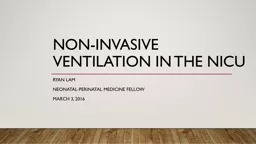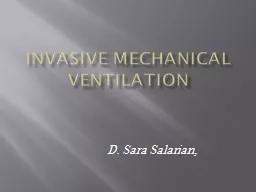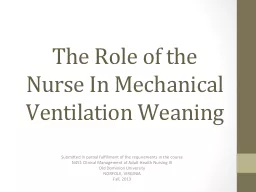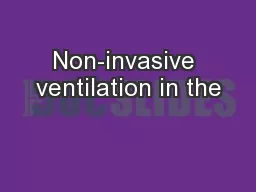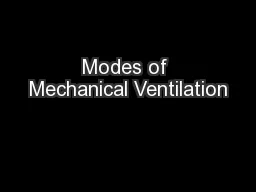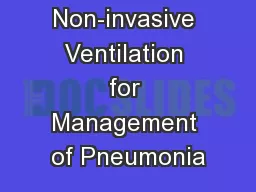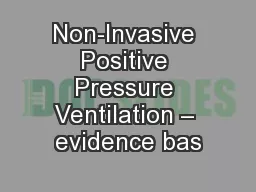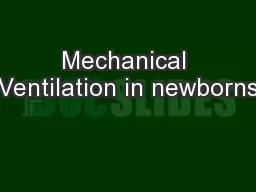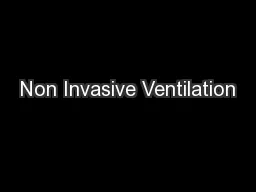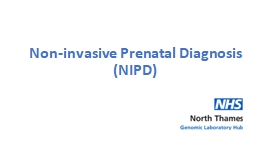PPT-Non-invasive ventilation in the
Author : alexa-scheidler | Published Date : 2017-09-27
NIcu Ryan Lam NeonatalPerinatal Medicine Fellow March 3 2016 Conflicts of Interest I have no financial conflicts of interest to declare Objectives Describe the development
Presentation Embed Code
Download Presentation
Download Presentation The PPT/PDF document "Non-invasive ventilation in the" is the property of its rightful owner. Permission is granted to download and print the materials on this website for personal, non-commercial use only, and to display it on your personal computer provided you do not modify the materials and that you retain all copyright notices contained in the materials. By downloading content from our website, you accept the terms of this agreement.
Non-invasive ventilation in the: Transcript
Download Rules Of Document
"Non-invasive ventilation in the"The content belongs to its owner. You may download and print it for personal use, without modification, and keep all copyright notices. By downloading, you agree to these terms.
Related Documents

